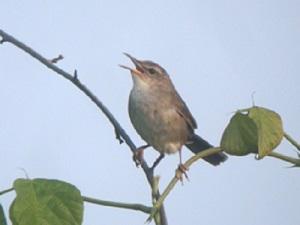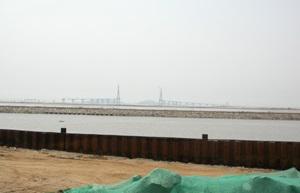Nial Moores
Other projects
The project aims to gather, organise and communicate information relevant to the conservation of the avian biodiversity of the South Korean part of the Yellow Sea in a bilingual Blueprint.

Globally Vulnerable Styans Grasshopper Warbler
The Yellow Sea supports many globally threatened and migratory species, yet conservation initiatives remain poorly supported by the wider conservation community and decision-makers, and with the exception of Birds Korea (based in Busan, Republic of Korea) there are no other NGOs on the Korean peninsula (or apparently in the wider eco-region) yet dedicated in their mission statement to the conservation of the Sea’s avian biodiversity.

Song Do reclamation
National and regional conservation efforts for the South Korean (ROK) part of the Sea, as elsewhere in this Eco-region, in the first require an improvement in easily accessible baseline information on species, on habitats and on policy. However, while useful, all reviews to date of the Yellow Sea contain major information gaps on avian biodiversity (e.g. on the status of key sites and species); lack adequate analysis (e.g. of reclamation impacts); policies tend not to link to existing bird-focused conservation initiatives (and vice versa); and most such information remains very poorly accessed by the wider public (being mostly written in English or rather technical language). At the same time, large-scale reclamation projects, unsustainable fishery practices, and island infrastructure projects continue (often in contradiction of policy statements and conservation obligations), contributing to widespread and in some cases rapid declines in avian biodiversity.
The Blueprint aims to fill many of these gaps. Blueprint Research includes an extensive literature review (both scientific and policy), in addition to Birds Korea field-surveys aimed to fill major information gaps including e.g. counts of seabirds at sea (monthly transect counts, Feb 2009-Feb 2010); monitoring of migrants on islands; breeding surveys (2009 and 2010); and counts of shorebirds in inter-tidal areas, including whole West Coast surveys (May 2008, Jan 2009; Aug 2010), and the third year of the Saemangeum Shorebird Monitoring Program (Apr-May 2008). Measurements of ROK tidal-flat area (2010) will also be conducted and will include an evaluation of wetland status. Examples of conservation successes and failures in the ROK will also be introduced, based on our own work and on the work of other collaborating organisations.
This will then be published in the bilingual (Korean and English) Blueprint (c1500 hard copies of first version), online on our websites (again, both Korean and English), and subsequently in scientific papers making up a large part of a doctoral thesis (University of Newcastle, Australia). The Blueprint will also be presented to media and a wide range of relevant stakeholders in October 2010, in the run up to the Tenth CBD COP (October 2010). Longer term too, data and analysis contained within the Blueprint will form a core element of the strategic planning of Birds Korea and as intended assist other organisations (in the ROK, DPRK and China) working towards the same end.